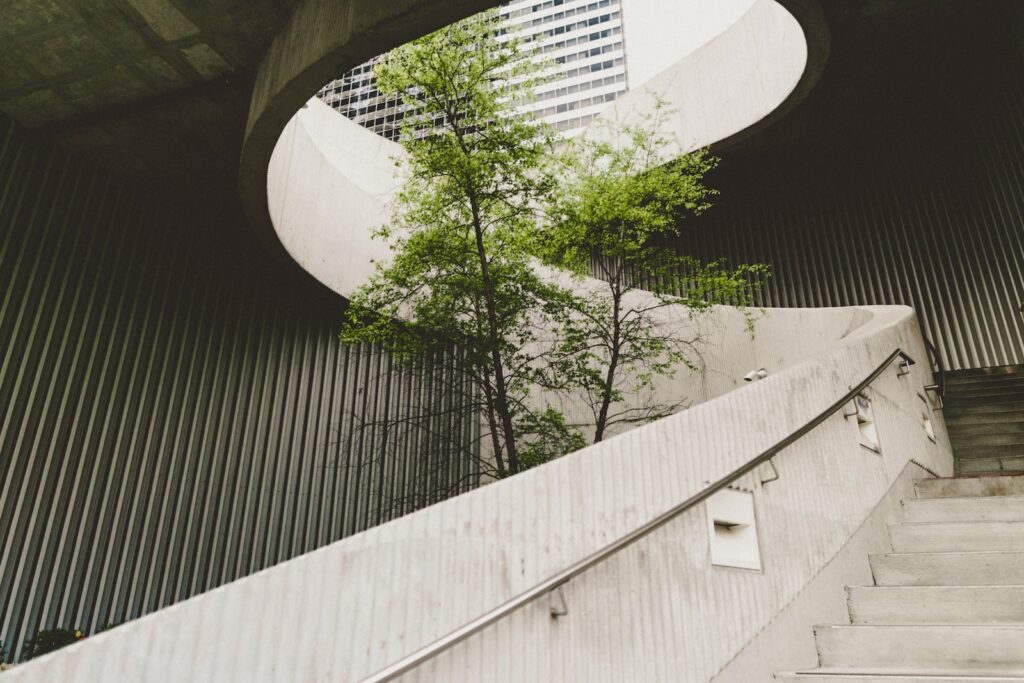
Sustainable interior design is becoming increasingly popular as people become more aware of the impact our actions have on the environment. It’s no secret that our homes consume a lot of energy and resources, from the materials used to build them to the electricity we use to power them. By incorporating sustainable design ideas, we can reduce our carbon footprint and create a healthier living environment for ourselves and future generations.
There are many different ways to introduce sustainable design into your home, from small changes like switching to energy-efficient light bulbs to larger projects like installing solar panels. Some popular sustainable interior design ideas include using natural materials like bamboo, cork, and reclaimed wood, which are renewable and biodegradable. Additionally, incorporating vintage or second-hand furniture is a great way to reduce waste and give new life to old pieces. By making these changes, you can create a beautiful and functional space that is also environmentally friendly.
Understanding Sustainable Interior Design
Sustainable interior design is an approach to creating interior spaces that prioritize environmental sustainability and social responsibility. It involves designing spaces that are not only aesthetically pleasing but also minimize negative environmental impacts, promote health and well-being, and support social equity.
The goal of sustainable interior design is to reduce the environmental impact of buildings and spaces while promoting a healthier and more sustainable lifestyle. This is achieved by using environmentally responsible materials, reducing energy consumption, and improving indoor air quality.
Sustainable interior design is a part of the larger sustainability movement, which seeks to reduce the negative impact of human activity on the environment. It is based on the principles of sustainable design, which include reducing waste, maximizing energy efficiency, and using renewable resources.
Some of the key principles of sustainable interior design include:
- Using environmentally friendly materials such as recycled or renewable materials, and avoiding materials that are harmful to the environment or human health.
- Maximizing energy efficiency through the use of energy-efficient lighting, heating, and cooling systems, and the use of natural light.
- Reducing water consumption through the use of low-flow fixtures and water-saving appliances.
- Improving indoor air quality by using materials that do not emit harmful chemicals, and by providing adequate ventilation.
- Supporting social equity by designing spaces that are accessible to all, regardless of their physical abilities or socioeconomic status.
By adopting sustainable interior design principles, we can create spaces that are not only beautiful but also environmentally responsible and socially equitable.
Importance of Sustainable Interior Design
Sustainable interior design is more than just a trend; it is a necessity. As we become more aware of the impact that our actions have on the environment, it is essential to consider the impact that our interior design choices have on the planet. Sustainable interior design is about creating a space that is not only aesthetically pleasing but also environmentally friendly.
One of the primary benefits of sustainable interior design is the improvement of indoor air quality. Traditional interior design materials can release harmful chemicals into the air, which can have a negative impact on our health. Sustainable materials, on the other hand, are non-toxic and do not release harmful chemicals into the air, making them better for our health.
Sustainable interior design also helps to reduce our carbon footprint. By choosing materials that are eco-friendly and sustainable, we can reduce the amount of waste that is generated during the production process. This, in turn, reduces the amount of energy that is required to manufacture new products, which helps to reduce greenhouse gas emissions.
According to the Environmental Protection Agency (EPA), indoor air pollution is one of the top five environmental health risks. Poor indoor air quality can lead to a range of health problems, including respiratory issues, allergies, and even cancer. Sustainable interior design can help to improve indoor air quality by using materials that are non-toxic and do not release harmful chemicals into the air.
Sustainable interior design is not just about protecting the environment; it is also about protecting human health. By choosing sustainable materials, we can create a space that is not only beautiful but also healthy for the occupants. Additionally, sustainable interior design can help to promote sustainable living and create communities that are more environmentally conscious.
In conclusion, sustainable interior design is essential for protecting the environment and promoting human health. By choosing sustainable materials, we can reduce our carbon footprint, improve indoor air quality, and create a space that is both beautiful and environmentally friendly.
Key Elements of Sustainable Interior Design
Sustainable interior design is a design philosophy that aims to reduce the negative impact of interior design on the environment. It involves using eco-friendly materials, energy-efficient appliances and fixtures, and natural elements to create a healthy and sustainable living space. Here are some key elements of sustainable interior design.
Eco-Friendly Materials
One of the most important elements of sustainable interior design is the use of eco-friendly materials. These materials are made from renewable resources, are non-toxic, and are recyclable or biodegradable. Examples of eco-friendly materials include bamboo, jute, recycled plastic, rattan, solid wood, and natural textiles like silk.
Natural Light and Ventilation
Natural light and ventilation are important aspects of sustainable interior design. They help reduce the need for artificial lighting and air conditioning, which can be energy-intensive. To maximize natural light and ventilation, consider using large windows, skylights, and open floor plans that allow for cross-ventilation.
Energy-Efficient Appliances and Fixtures
Energy-efficient appliances and fixtures are another key element of sustainable interior design. These appliances and fixtures use less energy than traditional ones, which can help reduce your energy bills and carbon footprint. Examples of energy-efficient appliances and fixtures include LED lighting, smart home technology, and low-flow toilets and showerheads.
Sustainable Furniture
Sustainable furniture is furniture made from sustainable materials, such as recycled materials or repurposed vintage pieces. It is also designed to be durable and long-lasting, reducing the need for frequent replacements. Examples of sustainable furniture include rattan furniture, modular furniture, and furniture made from recycled glass.
In summary, sustainable interior design involves using eco-friendly materials, natural light and ventilation, energy-efficient appliances and fixtures, and sustainable furniture to create a healthy and sustainable living space. By incorporating these elements into your interior design, you can reduce your environmental impact and create a more sustainable future.
Role of Sustainable Interior Designers
Sustainable interior designers play a crucial role in creating spaces that are not only aesthetically pleasing but also environmentally responsible. They are experts in designing interiors that are sustainable, eco-friendly, and energy-efficient. Their main focus is to create spaces that are healthy for the occupants and the environment.
Sustainable interior designers work closely with architects to ensure that the building’s design is sustainable from the ground up. They also work with builders and contractors to ensure that sustainable materials and practices are used during construction. This includes using materials that are renewable, recycled, or locally sourced. They also ensure that the building’s systems are energy-efficient, such as lighting, heating, and cooling.
One of the main benefits of sustainable interior design is increased productivity. Studies have shown that employees who work in sustainable buildings are more productive and have higher job satisfaction. This is because sustainable buildings are designed to provide a healthy and comfortable environment that promotes well-being and reduces stress.
Sustainable interior designers also play a role in educating their clients about the importance of sustainability. They help clients understand the benefits of sustainable design and how it can positively impact their lives. By educating clients, sustainable interior designers can help create a culture of sustainability that extends beyond the design of a single space.
In summary, sustainable interior designers play a vital role in creating spaces that are not only beautiful but also environmentally responsible. They work with architects, builders, and clients to ensure that sustainable materials and practices are used throughout the design and construction process. They also help educate clients about the importance of sustainability and how it can positively impact their lives.
Trends in Sustainable Interior Design
Sustainable interior design is becoming increasingly popular as people become more environmentally conscious. With the focus on sustainability, several trends have emerged in the world of interior design. Here are a few trends in sustainable interior design that are worth considering:
Minimalism
Minimalism is a trend that has been around for a while, and it’s not going away anytime soon. This trend is all about keeping things simple and decluttered. In sustainable interior design, minimalism is an excellent way to reduce waste and energy consumption. By keeping the design simple, you can reduce the number of materials used and the amount of energy required to produce and maintain them.
Upcycling
Upcycling is a trend that involves taking old or discarded materials and turning them into something new and useful. This trend is an excellent way to reduce waste and give new life to old materials. Upcycling can be used in a variety of ways in sustainable interior design, from using old pallets to create a unique coffee table to turning old glass bottles into decorative vases.
Functionality
Functionality is a trend that focuses on creating spaces that are both beautiful and practical. In sustainable interior design, functionality is essential because it helps to reduce waste and energy consumption. By creating spaces that are designed to be used, you can reduce the need for excess materials and energy to produce and maintain them.
Energy Efficiency
Energy efficiency is a trend that focuses on reducing energy consumption and waste. In sustainable interior design, energy efficiency can be achieved through the use of energy-efficient appliances, lighting, and HVAC systems. By reducing energy consumption, you can lower your carbon footprint and save money on your energy bills.
Circular Economy
The circular economy is a trend that focuses on creating a closed-loop system where waste is minimized, and resources are used efficiently. In sustainable interior design, the circular economy can be achieved by using materials that are recycled or can be recycled at the end of their life. By creating a closed-loop system, you can reduce waste and conserve resources.
Waste Reduction
Waste reduction is a trend that focuses on minimizing waste in all aspects of design. In sustainable interior design, waste reduction can be achieved by using materials that are durable and long-lasting, reducing the need for replacements. Additionally, waste reduction can be achieved through the use of composting and recycling programs, which can help to reduce the amount of waste that ends up in landfills.
Eco-Friendly Design
Eco-friendly design is a trend that focuses on creating spaces that are environmentally conscious. In sustainable interior design, eco-friendly design can be achieved by using materials that are non-toxic, renewable, and biodegradable. Additionally, eco-friendly design can be achieved by using non-carbon-based energy sources, such as solar or wind power.
Overall, sustainable interior design is a trend that is here to stay. By incorporating these trends into your design, you can create spaces that are both beautiful and environmentally conscious.
Impact on Property Value and Productivity
Sustainable interior design not only benefits the environment but also has a positive impact on property value and productivity. Implementing eco-friendly features in your home or office can increase its market value and attract potential buyers or renters.
According to a study by the National Association of Realtors, 61% of homebuyers are willing to pay more for a home with sustainable features. This means that investing in sustainable interior design can result in a higher return on investment when selling or renting out your property.
In addition to increasing property value, sustainable interior design can also improve productivity in the workplace. Studies have shown that creating a productive environment can lead to increased job satisfaction and employee retention. By incorporating natural light, plants, and ergonomic furniture, businesses can create a space that promotes employee well-being and productivity.
Moreover, sustainable interior design can also help reduce energy costs and improve indoor air quality. Energy-efficient lighting, appliances, and HVAC systems can lower energy bills, while using non-toxic and eco-friendly materials can reduce indoor air pollution. This can lead to a healthier and more comfortable living or working environment, resulting in increased productivity and satisfaction.
Overall, sustainable interior design can have a significant impact on property value and productivity. By implementing eco-friendly features, homeowners and businesses can create a space that benefits both the environment and its occupants.
Challenges and Solutions in Sustainable Interior Design
Sustainable interior design faces a number of challenges that must be addressed in order to achieve a truly eco-friendly space. Here are some major challenges and their corresponding solutions:
Waste and Organic Materials
One of the biggest challenges in sustainable interior design is reducing waste. Choosing organic materials can help reduce waste by using more natural and biodegradable materials that do not harm the environment. In addition, designers can choose to repurpose or upcycle old materials, such as reclaimed wood or vintage furniture, to reduce waste.
Negative Impacts and Respect for the Environment
Sustainable interior design must also consider the negative impacts that can arise from traditional design practices. For example, using harsh chemicals and pollutants can harm the environment and the health of those who occupy the space. To minimize these negative impacts, designers can choose low VOC (volatile organic compound) products and materials that do not release harmful pollutants into the air.
FSC Certification and Long-Distance Transportation
FSC (Forest Stewardship Council) certification is another important consideration in sustainable interior design. This certification ensures that wood products come from responsibly managed forests. Additionally, designers can choose to source materials locally to minimize long-distance transportation, which can have a negative impact on the environment.
Minimizing Waste
Designers can also minimize waste by choosing materials that are durable and long-lasting. This can include selecting furniture made from high-quality materials that will last for years, rather than choosing cheaper items that will need to be replaced more frequently. In addition, designers can choose to incorporate built-in storage solutions to help reduce clutter and minimize waste.
In conclusion, sustainable interior design faces a number of challenges, but there are solutions available to address these issues. By choosing organic materials, minimizing waste, and selecting products with FSC certification and low VOCs, designers can create eco-friendly spaces that are both beautiful and functional.
Case Studies of Sustainable Interior Design
Sustainable interior design is an approach that prioritizes the use of eco-friendly materials, energy-efficient systems, and waste reduction. Here are some case studies of sustainable interior design that showcase how innovative architects and interior designers are leading the charge in creating a healthy, just, and sustainable world.
1. The Bullitt Center
The Bullitt Center in Seattle is a six-story office building that is considered one of the greenest buildings in the world. The building features a range of sustainable design elements, including rainwater harvesting, solar panels, and a composting system. The Bullitt Center is also designed to be energy-efficient, with features such as triple-paned windows and a geothermal heating and cooling system. The building’s design is intended to inspire and educate others about the possibilities of sustainable design.
2. The Edge
The Edge in Amsterdam is a sustainable office building that is considered one of the most innovative buildings in the world. The building features a range of sustainable design elements, including solar panels, a rainwater collection system, and a smart lighting system that adjusts to the needs of the occupants. The Edge is also designed to be energy-efficient, with features such as triple-paned windows and a geothermal heating and cooling system. The building’s design is intended to create a healthy and productive work environment for its occupants.
3. The Plant
The Plant in Chicago is a former meatpacking plant that has been transformed into a sustainable food production facility. The building features a range of sustainable design elements, including an anaerobic digester that converts food waste into energy, a rainwater collection system, and a rooftop farm that produces vegetables and herbs. The Plant is also designed to be energy-efficient, with features such as insulated walls and a geothermal heating and cooling system. The building’s design is intended to create a closed-loop system that reduces waste and promotes sustainable food production.
These case studies demonstrate that sustainable interior design can benefit not only the residents and occupants of a building, but also local businesses and artisans who are involved in the construction and maintenance of the building. By prioritizing eco-friendly materials and energy-efficient systems, sustainable interior design can create a healthier, more just, and more sustainable world for all.
Conclusion
In conclusion, sustainable interior design is a great way to promote healthy living and longevity while also being mindful of the environment. By incorporating sustainable materials and design principles, we can create spaces that are not only beautiful but also eco-friendly.
One important aspect of sustainable interior design is the use of technology. Smart home devices can help reduce energy consumption and make our homes more efficient. For example, smart thermostats can automatically adjust the temperature based on our preferences and habits. Solar panels are also a great way to generate clean energy and reduce our reliance on fossil fuels.
When it comes to interior design tips for sustainability, there are many things to consider. Using lighter colors can help reflect natural light and reduce the need for artificial lighting. Choosing durable and eco-friendly materials such as bamboo, cork, or reclaimed wood can also make a big difference.
Overall, sustainable interior design is a great way to create beautiful and functional spaces that are also good for the planet. By making conscious choices about the materials and products we use, we can reduce our environmental impact while also promoting healthy living and longevity.






